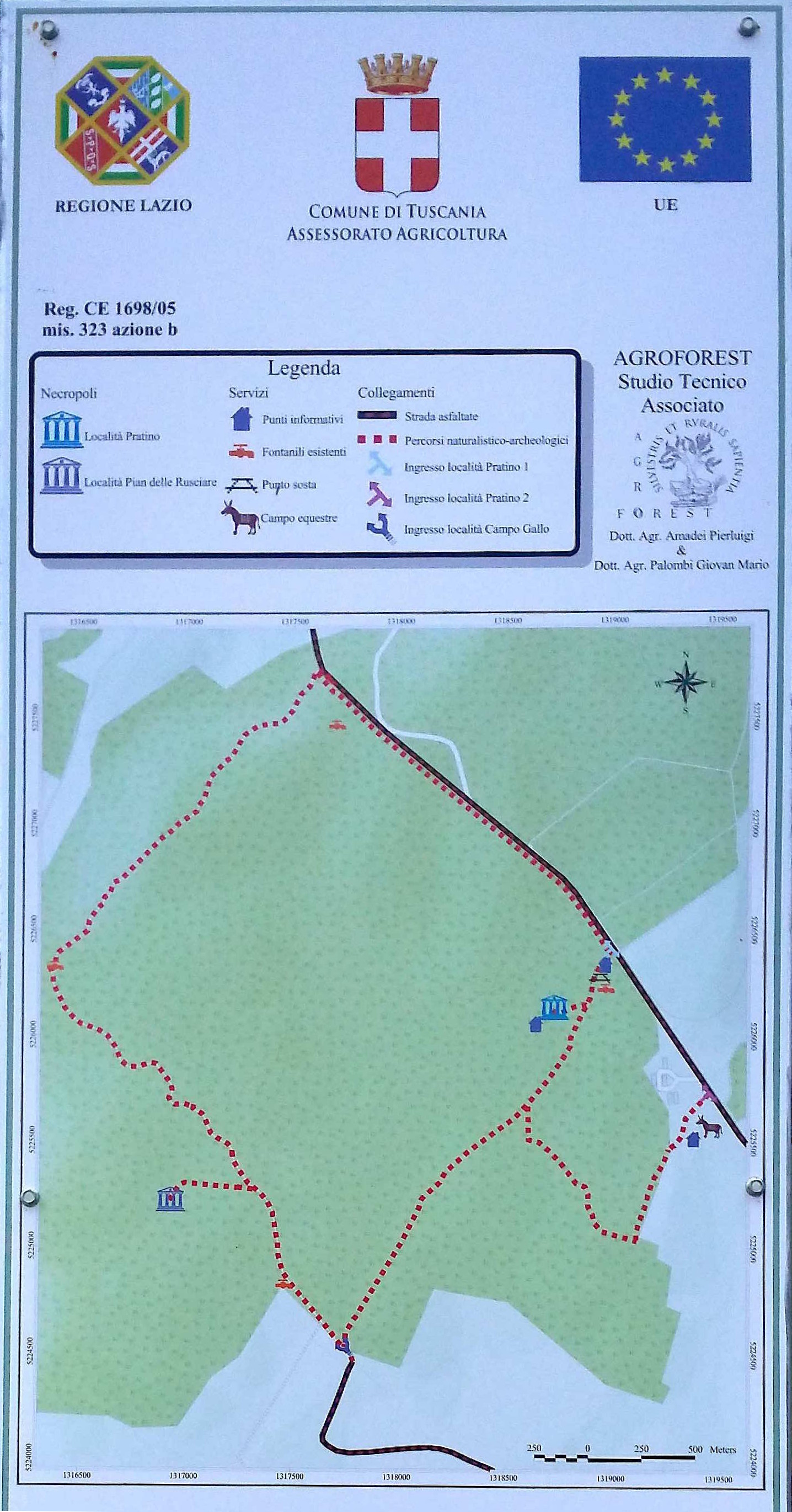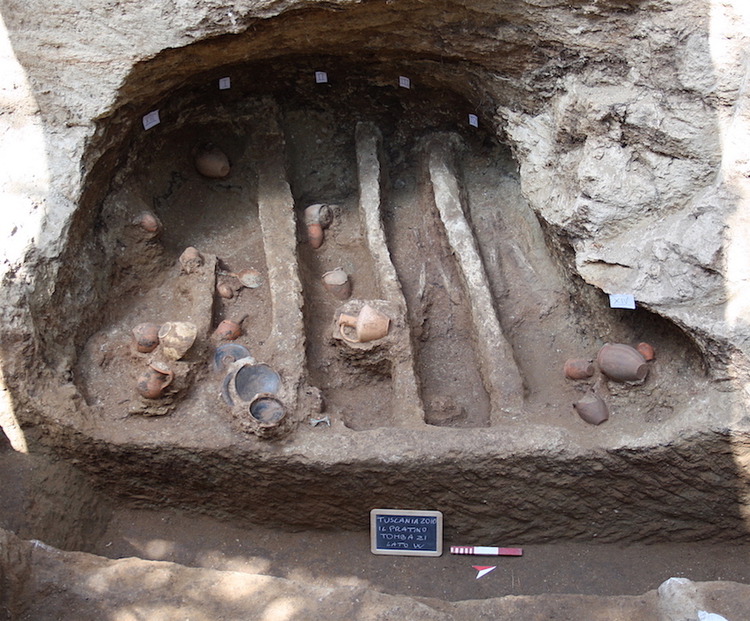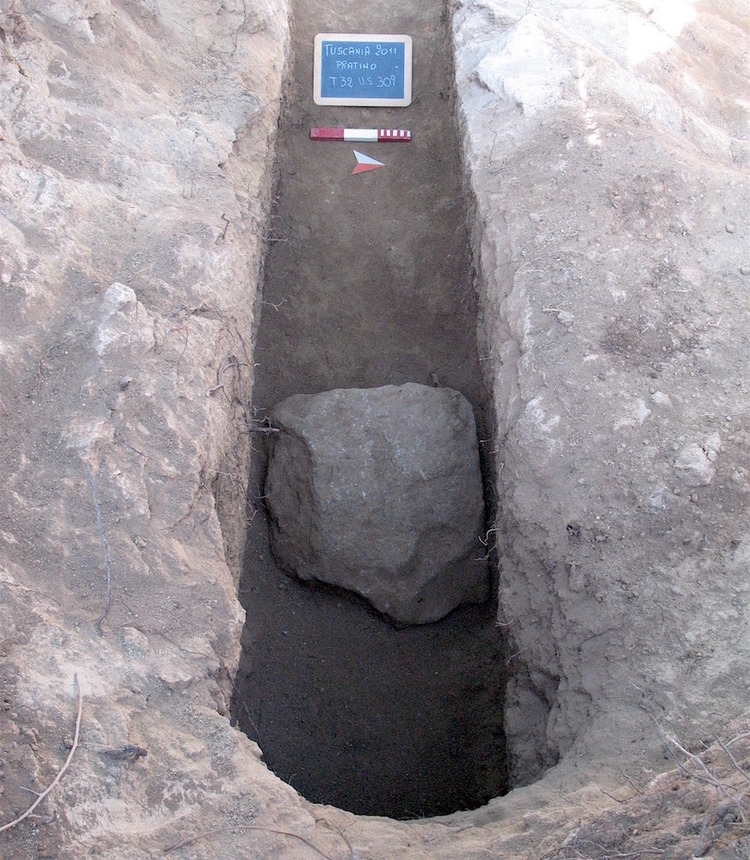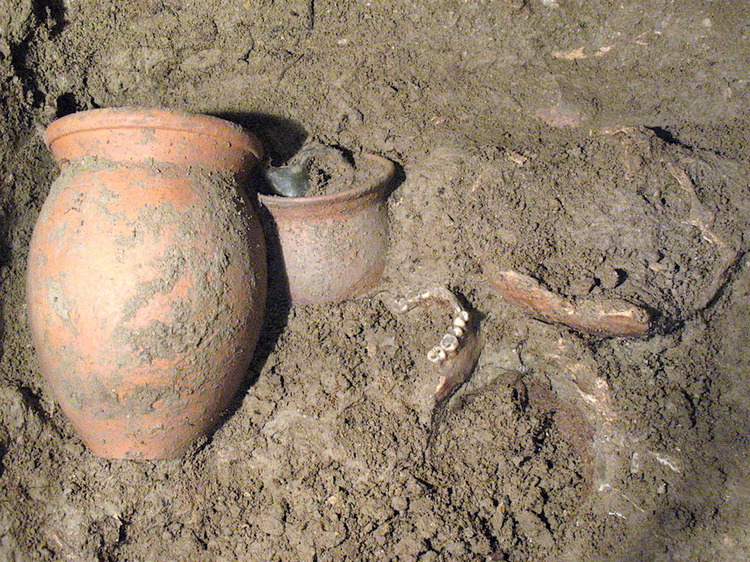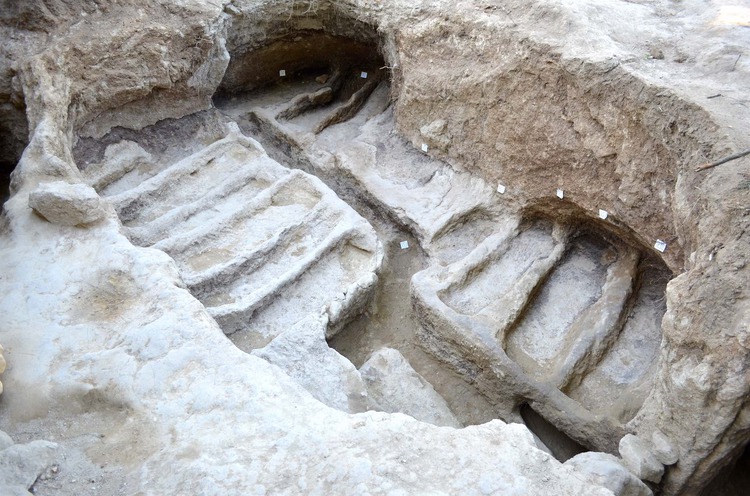Texts of the panels of the Archaeological Park of Macchia della Riserva at Tuscania (VT, ITALY)

Vai alla versione italiana
The Etruscan necropolis of Pratino is located on a flat area, on the eastern edge of Macchia della Riserva, and has been identified as a result of a field survey, which also established that an intensive activity of illegal excavation was perpetrated by violators. Nevertheless, the field survey highlighted the presence of funerary contexts practically intact and has allowed the acquisition of new data regarding the distribution, the typology and the history of the tombs. The funerary structures are densely arranged along two main axes, east-west and north-south, intersecting and sometimes even overlapping with each other. In particular, some pit tombs and vertical loculi (or shaft tombs), occupy the spaces between the chamber tombs, arranged with a different orientation in relation to the latter. This aspect, together with the grave goods, may indicate an earlier frequentation of the necropolis, which, as a whole, has developed during the Hellenistic period up to the the early Roman Empire. The intensive exploitation of this cemeterial area appears to be confirmed by the use of the same room to house primary context depositions all the way in the inner corridor or in secondary context, in the vertical walls of the platforms, by creating small niches used as ossuaries. The typology and the dimensions of the funerary structures are very different. Among the underground chamber tombs, are included some large to medium-sized examples, with a central inner corridor flanked by two large platforms organized in horizontal loculi (Nos. 20, 21, 22, 25, 44 A); other examples are smaller in size, designed for nuclear families, with simple platforms along the walls (Nos. 23, 28, 32, 37, 47); while others are for the use of one individual, with a single platform (n. 26) or even without any (n. 27). In some cases, the loculi are realized in the walls of the access corridors to the rooms (Nos. 20, 22, 37). Other tomb typologies are rectangular pit tombs (Nos. 24, 30, 31, 35, 48), sometimes covered with tiles, and vertical loculi (Nos. 29, 36, 45). Although the predominant ritual is that of inhumation, in the rooms were also found cinerary urns, housed in specific niches. Also several lithic cippi were recovered, which functioned as tombstones.


